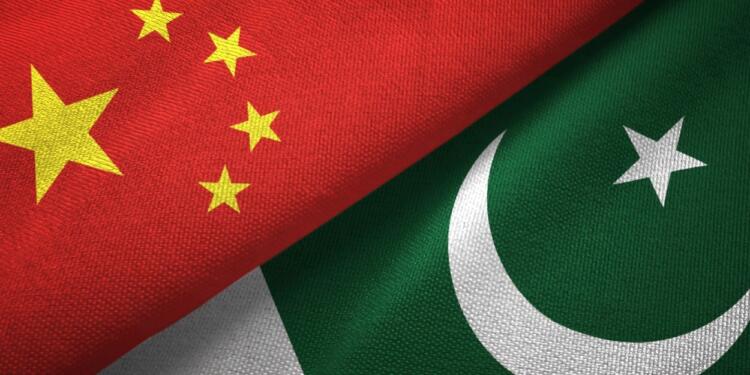In a significant development, China has drastically reduced its investment in Pakistan under the China-Pakistan Economic Corridor (CPEC) initiative. The year 2023 saw a staggering 74% decrease in Chinese funding compared to 2022. This sharp decline raises questions about the future of CPEC and its impact on Pakistan’s economic landscape.
Factors Behind the Investment Slowdown in Pakistan
Several factors have contributed to China’s decision to pull back its CPEC investments in Pakistan:
1. Disappointing returns on investments
2. Persistent delays in project completion
3. Ongoing security concerns
These issues have likely dampened China’s enthusiasm for pouring more money into Pakistan’s infrastructure and development projects. Additionally, Pakistan’s political instability and economic challenges have further complicated the investment climate.
Pakistan’s Position in the Belt and Road Initiative (BRI)
While Pakistan was among the first seven countries to join China’s ambitious Belt and Road Initiative in 2013, recent events suggest a potential shift in its status. Currently, 151 nations participate in the BRI, but Pakistan’s engagement has experienced a significant downturn. This decline is particularly noteworthy given Pakistan’s strategic importance to China’s regional ambitions.
Comparing Pakistan to Other BRI Recipients
In contrast to Pakistan’s declining CPEC engagement, other countries have seen substantial growth in their BRI involvement:
1. South Korea: 577% increase
2. Bolivia: 493% growth
3. Namibia: 457% rise
4. Tanzania: 415% expansion
5. Uzbekistan: 375% boost
These figures indicate that China’s reduced investment in Pakistan is likely a deliberate decision rather than a result of global economic slowdowns. The stark difference in investment growth between Pakistan and these countries highlights the unique challenges facing CPEC projects.
China’s Concerns and Ultimatum to Pakistan
China’s frustration with Pakistan’s inability to protect Chinese interests has become increasingly apparent. During a recent visit to China, Pakistani Prime Minister Shahbaz Sharif faced criticism from President Xi Jinping over security issues. China has demanded that Pakistan eliminate threats to the BRI from armed resistance groups, particularly the Tehreek-E-Taliban (Pakistan) and Baloch organizations.
The safety of Chinese workers in Pakistan has been a major concern. Several attacks targeting Chinese nationals have occurred in recent years, leading to casualties and project delays. These security issues have significantly impacted investor confidence and the overall progress of CPEC initiatives in Pakistan.
Pakistan’s Response to Chinese Pressure
In response to China’s concerns, Pakistan has launched a military operation called “Azm-e-Istehkam” (Strong Commitment for Stability). This move aims to address security threats and reassure Chinese investors. However, the effectiveness of this operation remains to be seen, given the limited success of similar past initiatives.
Pakistan’s government has also pledged to improve project management and address corruption issues that have plagued some CPEC projects. These efforts are crucial for rebuilding trust with Chinese investors and potentially reviving CPEC momentum in Pakistan.
Pakistan’s Balancing Act: China and the United States
Interestingly, Pakistan appears to be leveraging its relationships with both China and the United States. While addressing Chinese concerns, Pakistan has also sought military assistance from the U.S. to combat the rising threat from the TTP. This dual approach highlights Pakistan’s complex geopolitical position and its efforts to maintain strategic autonomy.
Pakistan’s request for U.S. military equipment underscores the delicate balance it must maintain between its traditional allies and its growing economic partnership with China. This balancing act is crucial for Pakistan’s national security and economic interests.
Long-term Implications for Pakistan
The sharp decline in CPEC investments raises concerns about Pakistan’s economic future and its ability to complete crucial infrastructure projects. Moreover, some Pakistani experts worry about the potential for increased Chinese influence, including the possibility of a future Chinese military presence in Pakistan.
The slowdown in CPEC projects could have significant repercussions for Pakistan’s energy sector, transportation infrastructure, and overall economic growth. Many of the planned CPEC projects were aimed at addressing Pakistan’s chronic energy shortages and improving its logistics capabilities.
Conclusion
The success or failure of CPEC will have far-reaching implications not only for Pakistan’s economic future but also for regional geopolitics and China’s broader BRI strategy. As such, the international community will be closely watching how Pakistan manages these complex challenges and whether it can rekindle China’s interest in CPEC investments.
ALSO READ: The Controversy on Raja Ka Dand in Parliament Again!





























